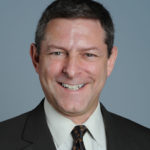This is a guest post from one of our subject matter experts, Dr. Richard N. Bradley
Every year, millions of people learn how to prevent and respond to emergencies-especially choking emergencies- by taking American Red Cross training courses.
This week an article appeared in the Cincinnati Enquirer outlining some differences in opinion about how people should respond to choking emergencies. There are a few things you should know about our stance on how to treat choking emergencies.
First, it’s important to know that all Red Cross training and related products are designed based on the most up-to-date science available on first aid, CPR, AED and emergency cardiovascular care. The Red Cross even has its own Scientific Advisory Council to help evaluate the best science available. This council is an independent body of experts that provides guidance, based on scientific and educational research, on content for Red Cross programs, products and messaging.
I’m a member of the Scientific Advisory Council and chair of its CPR Sub-Council, and here are several other points about how we developed our choking recommendations:
The Red Cross has recommended using multiple protocols for removing foreign body obstructions blocking airways including delivering back blows, administering abdominal thrusts (Heimlich Maneuver) and administering both black blows and abdominal thrusts.
In 1974, Dr. Henry Heimlich came to the Red Cross advocating his maneuver. An ad hoc committee was formed in 1975. Based on the committee’s recommendation, performing abdominal thrusts was included in the 1976 edition of the Red Cross booklet First Aid for Foreign Body Obstruction of the Airway.
The Red Cross uses the term “abdominal thrusts” rather than the namesake “Heimlich Maneuver” in training programs and materials in order to clearly describe exactly what the skill is.
Red Cross Current Recommendation
American Red Cross 2005 Guidelines for Emergency Care and Education recommend using cycles of 5 back blows and 5 abdominal thrusts to treat conscious, choking children and adults. A review of the scientific literature suggested that back blows, abdominal thrusts and chest compressions are equally effective. Additionally, the use of more than one method can be more effective to dislodge an object. These findings are consistent with those of international resuscitation societies.
The Red Cross certainly isn’t discounting the use of abdominal thrusts. But we include back blows, abdominal thrusts and chest compressions in our training because there is no clear scientific evidence to say that one technique is more effective than the others when treating a choking victim.
Related literature was reviewed during the 2010 Guidelines process and the recommendation remains the same.
The issue is timely because the Scientific Advisory Council is currently conducting a triennial scientific review on techniques to treat first aid for conscious, choking victims. We produce similar periodic reviews for all lifesaving skills and, as always, we’ll take great care and effort to review the best science behind how we tell the public to respond to a choking emergency.
 Richard N. Bradley, M.D., is currently an associate professor of emergency medicine at the University of Texas Medical School at Houston. He serves there as the Chief of the Division of EMS and Disaster Medicine. Dr. Bradley is board-certified in emergency medicine and is a fellow of the American College of Emergency Physicians. He began his American Red Cross career in 1977, serving as a volunteer at the Santa Clara Valley, Calif. Chapter. He has twenty years of experience elsewhere in the field of emergency service, as well, as both a firefighter and a paramedic.
Richard N. Bradley, M.D., is currently an associate professor of emergency medicine at the University of Texas Medical School at Houston. He serves there as the Chief of the Division of EMS and Disaster Medicine. Dr. Bradley is board-certified in emergency medicine and is a fellow of the American College of Emergency Physicians. He began his American Red Cross career in 1977, serving as a volunteer at the Santa Clara Valley, Calif. Chapter. He has twenty years of experience elsewhere in the field of emergency service, as well, as both a firefighter and a paramedic.
